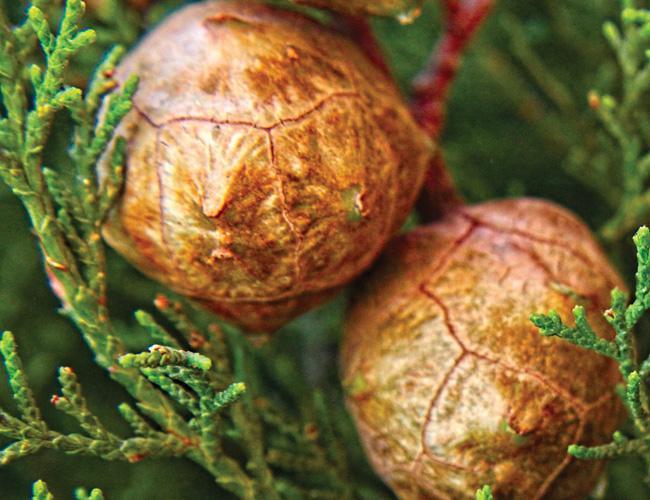Ancestral use
The scientific name for the Mediterranean (or Italian) cypress derives from the Greek word cyparissus for “cypress” and from the Latin sempervirens which means “always green”. In Greek medicine, cypress was primarily used to soothe haemorrhoids. Other properties have since been attributed to it.
Botanical details
The cypress is a tree with a characteristic slender profile, tapered at the top and bottom, which can grow up to 25 m tall. It is a native of eastern Europe and western Asia and it particularly grows in Mediterranean countries. Its reddish-grey bark releases a very strong turpentine odour. The evergreen leaves are greyish-green in colour and scale-like. The female flowers, grouped into catkins, produce fruit known as cypress nuts.

Properties
Cypress nuts contain active ingredients with antiviral properties1, which makes this plant the No.1 plant for all acute or recurring viral infections. These compounds have a direct action on the virus and can therefore eliminate infection1; 2.
Cypress is also traditionally used to relieve the symptoms of venous insufficiency.
Indications
- Flu-like illnesses, ENT and chest infections
- Herpes
- Venous insufficiency
Possible combinations
Cypress + Echinacea:
flu-like illnesses, recurrent viral infections

Cypress + Liquorice:
recurrent herpes

Precautions
No contraindication has yet been listed.






